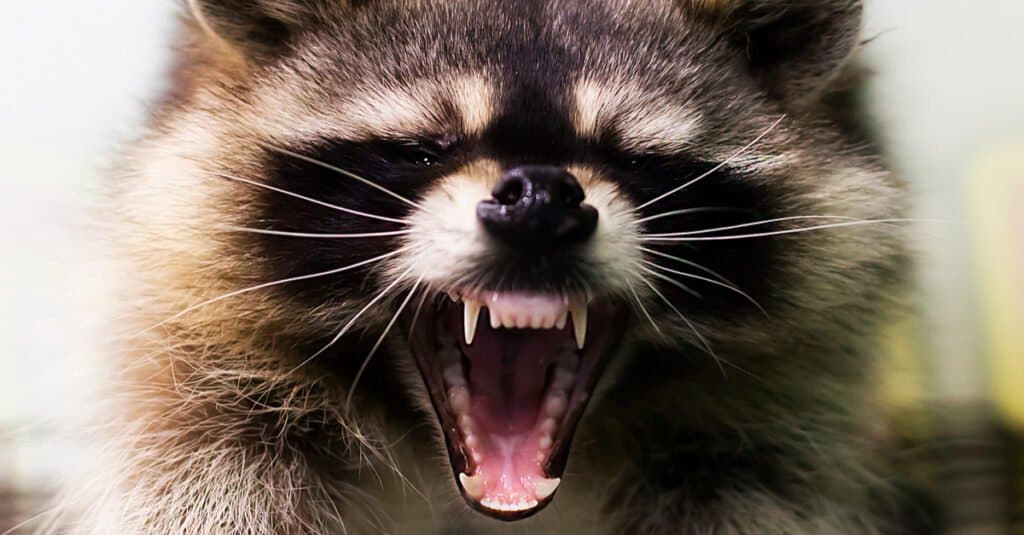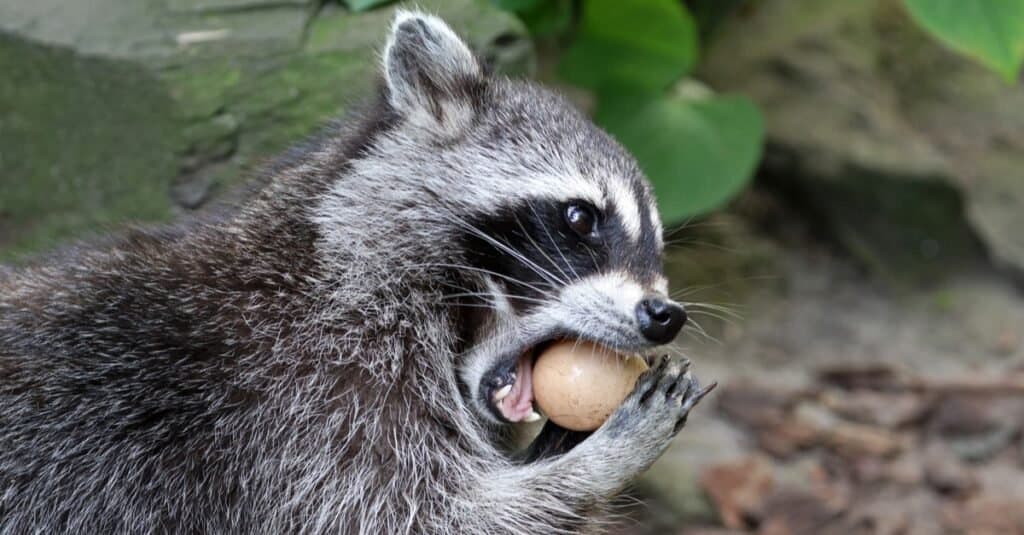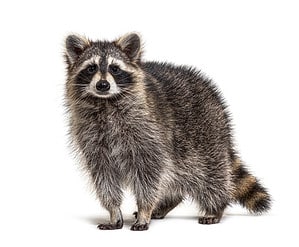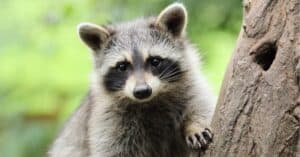If you’re living in some parts of North America, then there is a huge chance that you have already spotted, or even encountered, a racoon. This is because raccoons are one of the most common mammals seen in the region that are not domesticated.
With their very distinctive feature, that is, a black facial mask around their eyes, raccoons may like seem cute and innocent animals, just wandering about to scavenge from trash, but they actually have a lot more to offer than our usual impression of them. Raccoons turn out to be one of the smartest animals on the planet, who are proven by several studies to have the ability to solve puzzles and pick locks using their incredible memories.
Raccoons are often prey to many land mammals, but that does not mean they don’t have their own set of prey they love to feast on too. As opportunistic feeders, they can eat a wide variety of food ranging from plant materials to other animals, so it might be a little tricky to assume just what type of teeth these mammals have.
What Kind of Teeth Do Raccoons Have?

A raccoon showing its teeth
©vilma3000/Shutterstock.com
Raccoons, like most mammals, have a complete set of canine teeth, incisors, and cheek teeth that include premolar and molar teeth.
These omnivores are bestowed with 40 teeth, including four long and pointed canines in their mouth’s front, arranged in a dental formula of: incisors 3/3, canines 1/1, premolars 4/4, and molars 2/2 = 40.
Aside from the fact that their canines are oval in shape, rather than round, their incisors are largely undefined and fairly long. The molars of raccoons are wide and have crowns of circular conical cusps.
What is the Function of a Raccoon’s Teeth?
Just like other omnivores and carnivorous mammals, the raccoon’s sharp set of front teeth are mainly used to rip, cut, and pierce through flesh and vegetation, while the flattened teeth located at the further parts of their mouth are built to crush and grind their food.
The food choices of an animal has a significant impact on the species’ dental structure. An animal’s dentition, which is the development and arrangement of teeth, best shows this, but an animal’s skull also adapts to fit its nutrition. Most carnivores, for instance, have teeth that are mainly used for tearing and jaws that can bite and chew with enormous force, while herbivores have teeth and jaws that can crush thick vegetation. The specifically designed skulls and teeth of omnivores allow them to ingest a variety of meals. An animal’s dental structure tells so much about a certain animal’s diet, that even a species’ diet that has long been extinct can still be discovered.
As omnivores like bears, possums, and even humans, raccoons are gifted with teeth structure that fits for a variety of foods. Most omnivores have developed a range of teeth that can be found in different areas of their mouths that are each suited to a specific sort of food. Our incisor and canine teeth are used for ripping and cutting, while our molars are particularly used to grind food. The term heterodont dentition is used by biologists to describe animals with such teeth.
What Do Raccoons Eat?

Raccoons eat anything that include fruits, insects, birds, and even carrion.
©iStock.com/Edwin_Butter
Raccoons eat a wide variety of food that include plant materials like fruits, berries, corn, nuts, meat, insects, frogs, crayfish, snakes, snails, fish, birds, and even other smaller mammals such as rodents and squirrels. As opportunistic feeders, they can also scavenge food such as carrion, or from the garbage, which made them earn the name “trash pandas” so effortlessly.
Sharp fangs and razor-sharp claws make raccoons ferocious warriors that will devour anything they can get their hands on. Thus, their food is heavily determined by the environment in which they live. Because they can eat both plants and animals, they are an essential part of the ecosystem in which they reside. As a bonus benefit to their environment, raccoons also help distribute the seeds of the fruits that they eat.
Raccoons eat more invertebrates than vertebrates when it comes to meat. The raccoon is also not beyond scavenging human garbage or devouring roadkill when food is limited.
How Strong is a Raccoon’s Bite?

Raccoons have a stronger bite than domestic cats
©dangdumrong/Shutterstock.com
Raccoons have a pretty strong bite that is a result of having a really strong bite force combined with their really sharp teeth. Like cats, raccoons rely on the sharpness of their teeth too in order to leave a remarkable bite.
The bite force quotient (BFQ) of a raccoon is roughly 100, whereas the BFQ of a domestic cat is around 67. Raccoons also have extremely sharp canines with a blade-like border on the front and back of their top teeth, which is a formidable weapon.
A bite force quotient is the value which represents how strong an animal can bite while also taking its size into consideration. For instance, a brown bear‘s BFQ is around 88, while an otter’s is around 113, thus while an otter bite can be painful, it’s still better than being bitten by a bear.
Do Raccoons Bite Humans?
Raccoons may or may not attack people depending on the circumstances. If a raccoon feels threatened or if it feels the need to protect its young, it is more likely to attack. Unless they feel threatened, raccoons only attack humans on rare occasions, and they can cause serious harm. For instance, when a homeowner accidentally scares a raccoon, or when a homeowner attempts to pick up a raccoon with their hands in an enclosed place from which the animal cannot safely leave, these animals can feel threatened, and therefore make an attack.
Apart from being aggressive when defending themselves, racoons scavenge trash, which may bring humans some diseases, such as leptospirosis. Raccoons are also known to have deadly rabies, which are very dangerous for humans.
The photo featured at the top of this post is © vilma3000/Shutterstock.com
Thank you for reading! Have some feedback for us? Contact the AZ Animals editorial team.






